Ancient Egyptian Symbols: The Most Important Symbols and Their Meanings
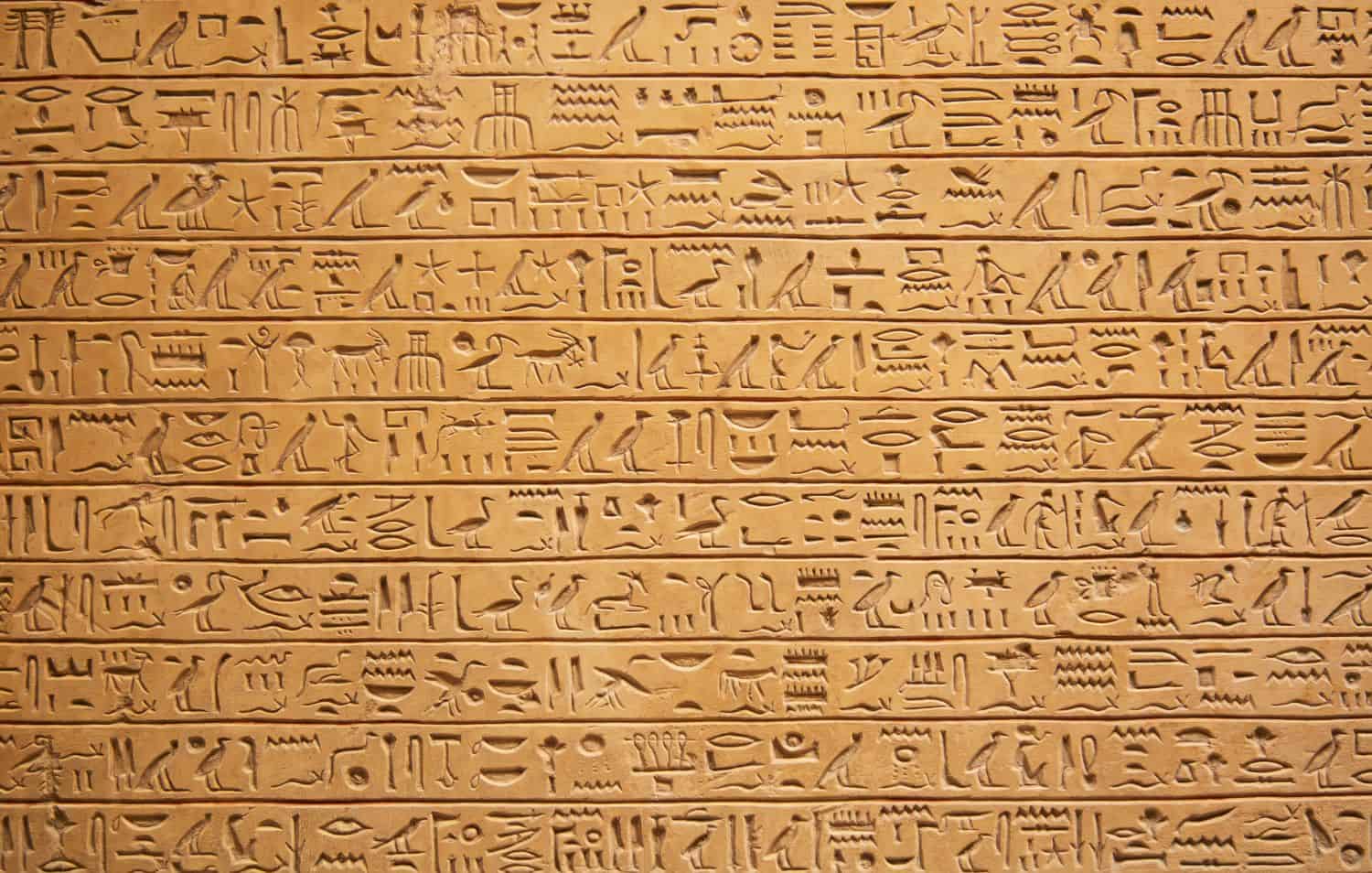
Updated On: February 01, 2024 by ConnollyCove
Ancient Egyptian symbols are hidden in the details of our surroundings even when we’re not paying attention to them. The ancient Egyptian civilisation is one of the oldest and most well-known in the world, and its ancient symbols are often used by fashion gurus. You are probably familiar with the Eye of Horus or the Key to Life and have seen them being used in accessories, but there is more to Egyptian symbols than just these two.
Before humanity knew writing, the ancient Egyptians, with their brilliant genius, used images and drawings to symbolise the initial sounds of words. These symbols were inspired by the elements in their environment, such as animals, plants, and artefacts, and with that, one of the oldest writing systems was introduced—the hieroglyphic writing system.
If you are enthusiastic and passionate about Egyptian civilisation, this article will help you understand its deepest meanings by revealing the significance of the various symbols.
Ancient Egyptian Symbols and Their Meanings
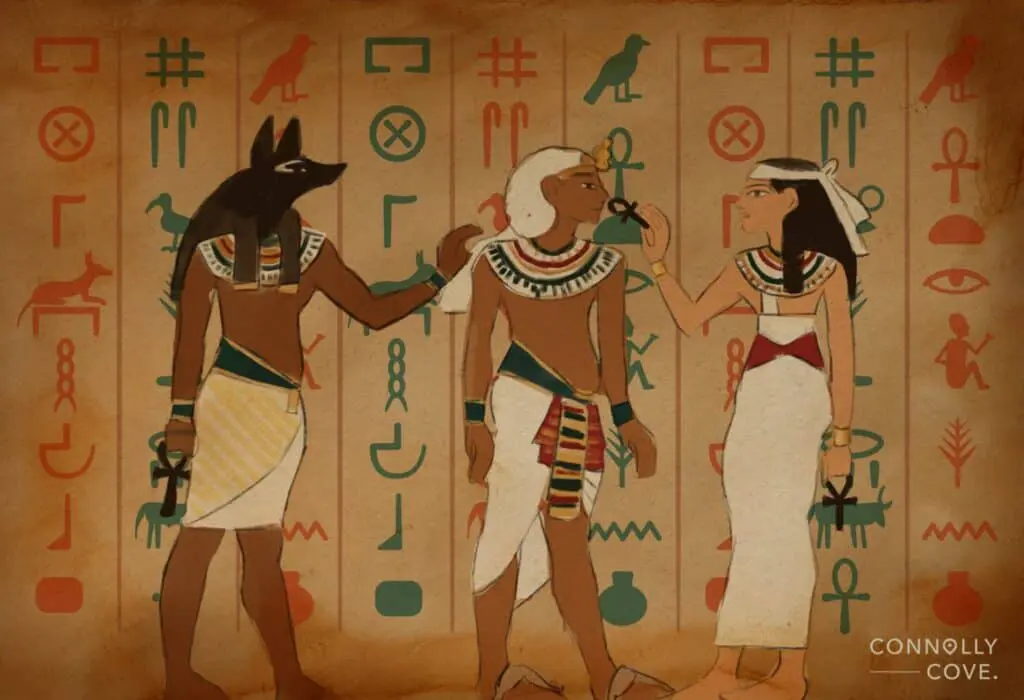
We are going to solve the puzzles and reveal the secret meanings these antiquated symbols express to understand the ancient Egyptian experience fully. Join us as we explore the world of Egyptian symbolism, where each hieroglyphic line and carved image narrates a story about gods, pharaohs, and people’s lives (and the afterlife, of course).
The Ankh Symbol: the Union of the Spiritual and Physical Worlds
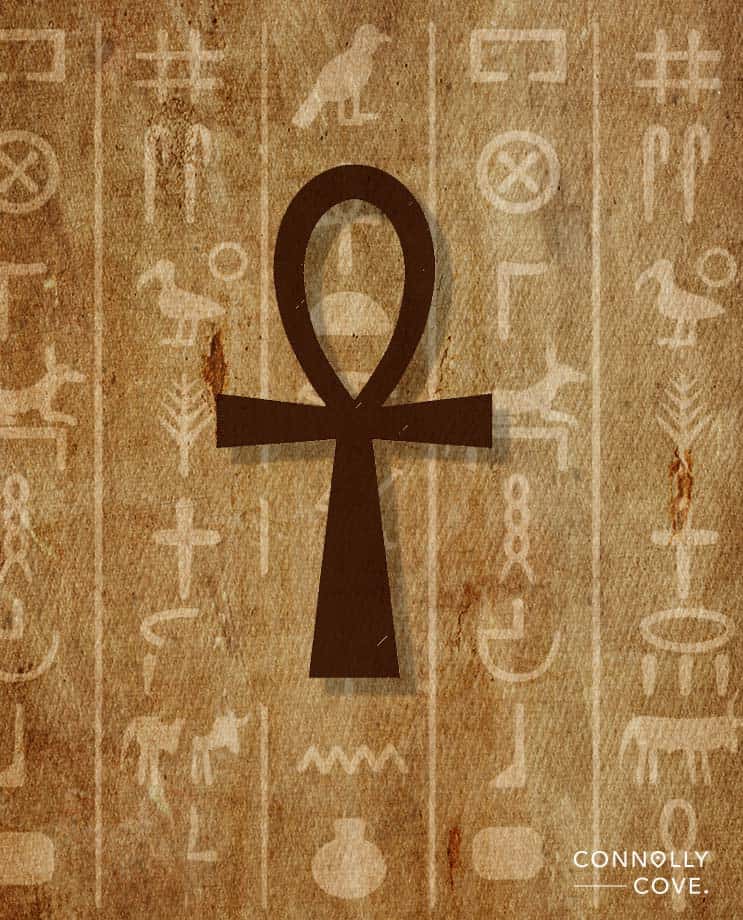
The Ankh is an Egyptian symbol that stands for both physical and immortal life. It has a looped top and resembles a cross; it is often referred to as the “Key of Life.” The vertical line is supposed to represent the flow of the Nile River, while the loop at the top represents the sun rising over the horizon.
Osiris, Isis, and Hathor are a few of the deities the Ankh is linked to. The symbol was utilised in religious rituals as it was thought to have magical and protective qualities. Not only that, but the Ankh symbolised life, fertility, spiritual vitality, and the union of male and female qualities in the divine. It was regarded as a representation of harmony and balance that unites the spiritual and material worlds.
The Eye of Horus: Protection and Restoration
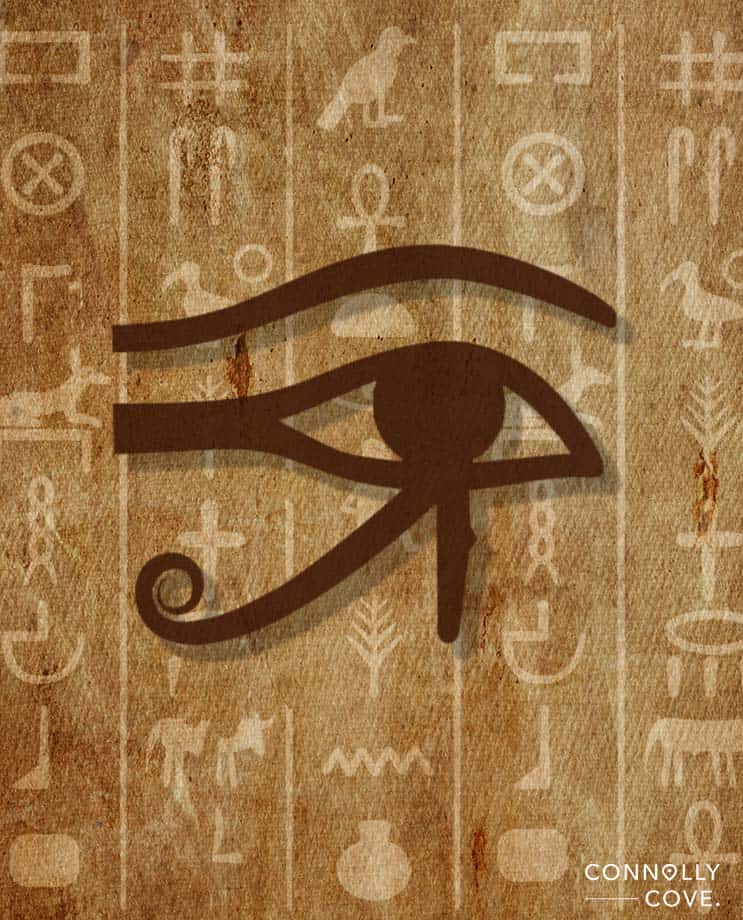
An ancient Egyptian symbol with great significance in their mythology and belief system is the Eye of Horus. It stands for protection, wellness, and restoration.
The sky god Horus, thought to be Osiris and Isis’s child, is linked to the Eye of Horus. According to Egyptian mythology, Horus supposedly lost his left eye in a conflict with the god Seth. The eye was eventually restored by the god Thoth and subsequently became a symbol of healing and rebirth.
Today, the Eye of Horus is a widely recognised symbol used so frequently in jewellery and artwork that even modern Egyptians still believe in its power to ward off envy and evil.
The Eye of Ra: the Sun
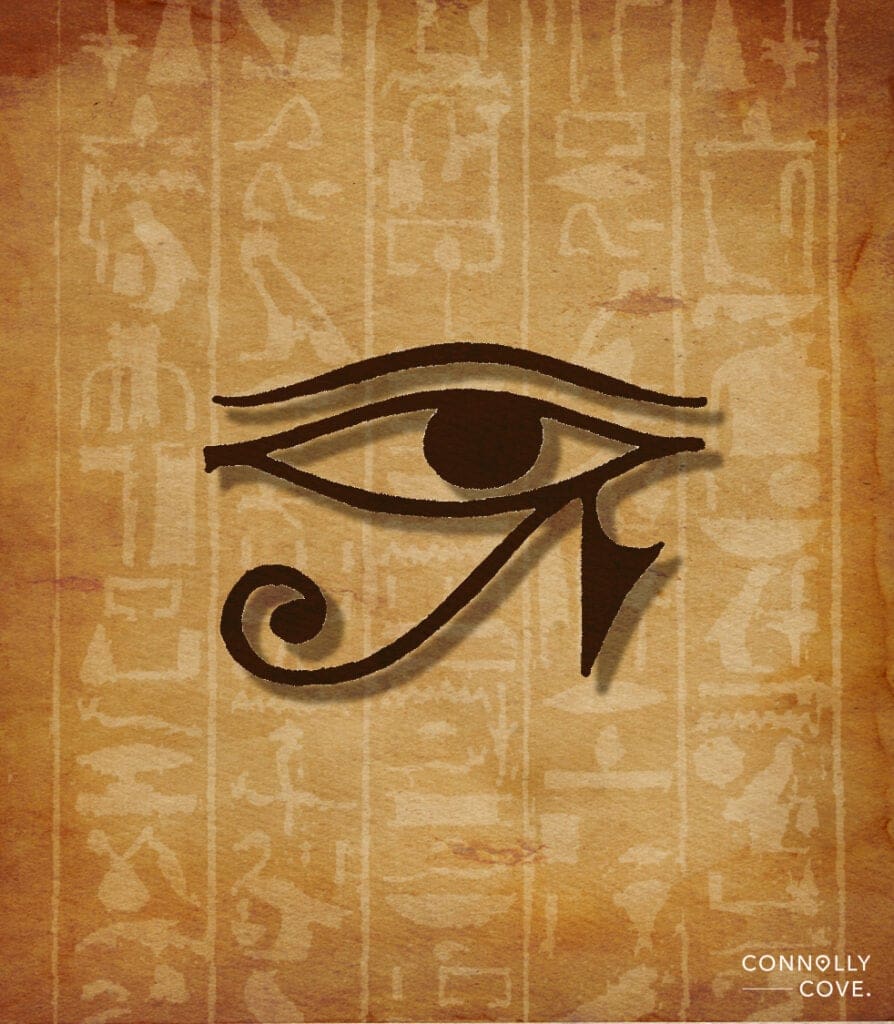
A powerful symbol in ancient Egyptian mythology connected to the sun god Ra is the Eye of Ra. It symbolises the sun itself and signifies the concepts of security, strength, and divine majesty. The Eye of Ra, portrayed as a stylised human eye, is similar to the Eye of Horus but differs in some aspects.
The splendour and heat of the sun are frequently represented by it in vivid colours like red or gold. It is also connected to the idea of light and enlightenment and stands for insight, the wisdom within, and the awakening of consciousness. All of these concepts and ideas were prominent in daily ancient Egyptian life and were most valued.
The Scarab: Rebirth
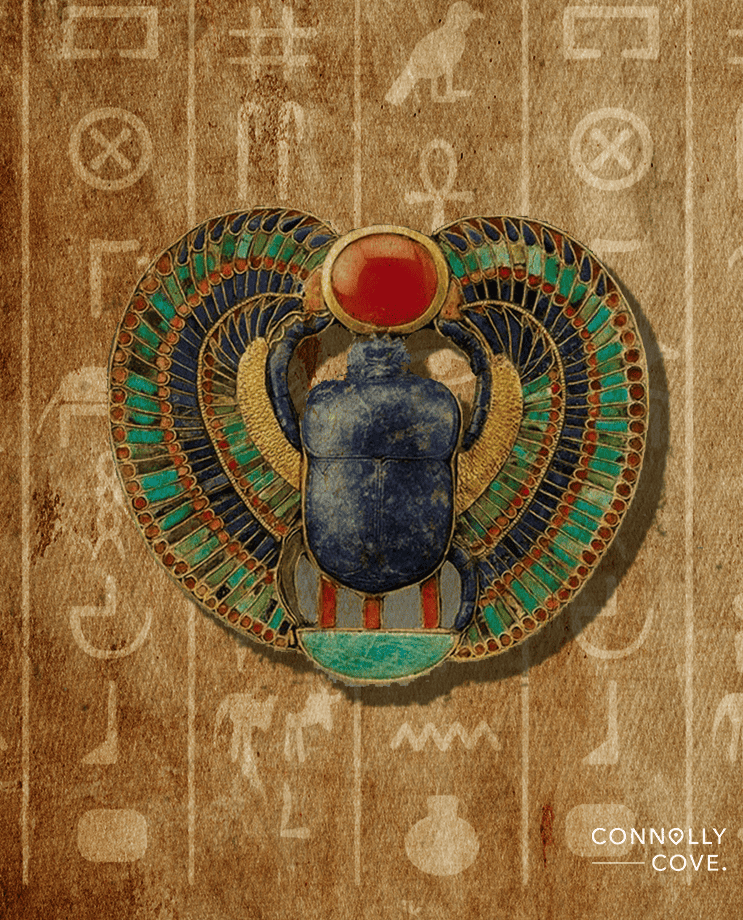
The Scarab beetle, which is well-known for being associated with rebirth, transformation, and protection, is a key symbol in ancient Egyptian culture. The sun, the cycle of life, and the idea of rebirth are all represented by the Scarab.
The tiny larvae of the Scarab beetle hatch from a dung ball, roll along the ground and eventually emerge as adult beetles. This life cycle was believed to represent the journey of the soul through life, death, and the afterlife.
In addition to the strong connection to the afterlife, the Scarab also represented protection and fortune. It was thought to have supernatural powers that might ward off misfortune, sickness, and evil spirits. To this day, some Egyptians still believe in this power, leading the scarab beetle to be integrated into jewellery and amulets, acting as a charm for luck and personal protection.
Amenta: the Afterlife and the Land of the Dead
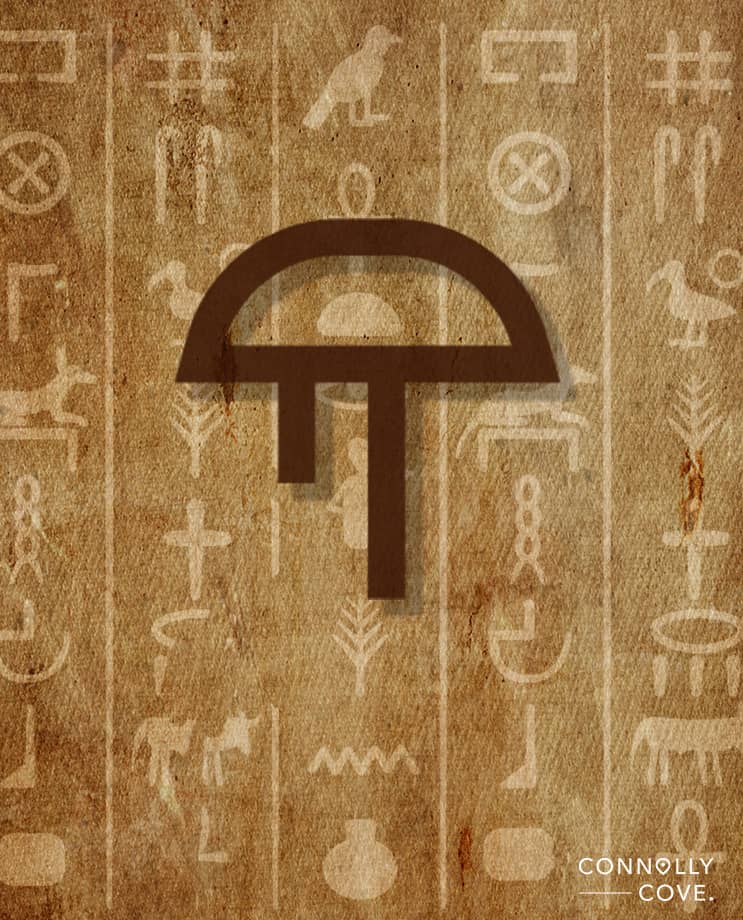
Amenta is a concept in the mythology and religion of ancient Egypt that refers to the Underworld or the Land of the Dead. It accentuates the world of the afterlife, where the souls of those who passed away went and faced judgement before achieving eternal life.
Amenta is described in Egyptian mythology as a huge, mysterious place beneath the ground or beyond the western horizon, where the sun sets. Ancient Egyptians linked it to the god Osiris, who oversaw the souls’ judgement as the afterlife’s ruler.
The journey through Amenta was described as both dangerous and profound. The soul would meet difficulties, go through judgement, and be weighed against the feather of Ma’at, the goddess of truth and justice, while being guided by judgement and protective spells.
The Tyet: Femininity and Protection
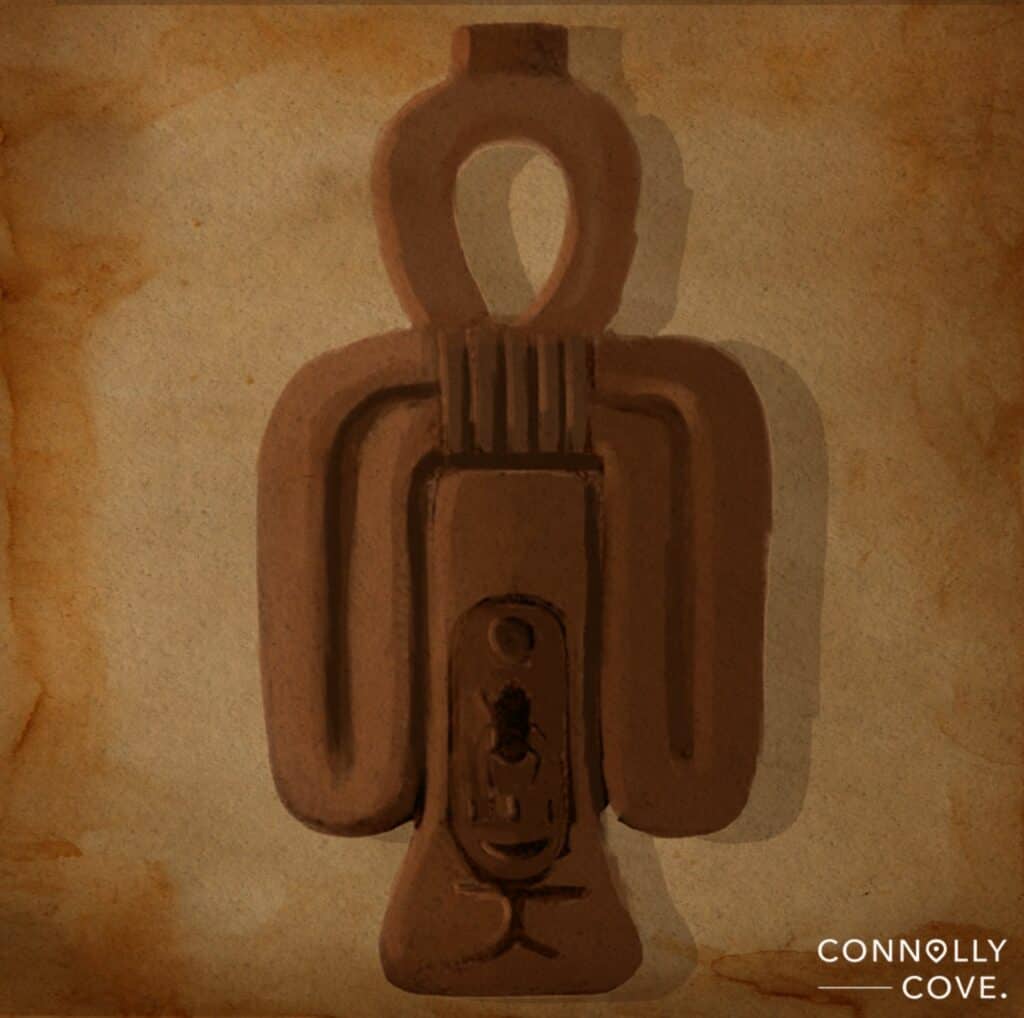
The Tyet, sometimes referred to as the Knot of Isis or the Blood of Isis, is a symbolic representation of the goddess Isis from ancient Egypt. It describes a referred-to knot or amulet that resembles an ankh with its arms folded downward in the form of a looped cross.
The Tyet represents many different aspects of life and protection. It has a strong connection to the goddess Isis, who was known as the mother goddess and was connected to magic, healing, and fertility. The sign, with its red colour, represents Isis’ menstrual blood, signifying both her nurturing and life-giving attributes. It is thought to offer protection to women throughout their lives and during childbirth.
The Djed Pillar: Stability and Endurance

The Djed pillar is a symbol in ancient Egypt that stands for steadiness, endurance, and strength. It appears as a pillar-like construction with a wide base and a thin top usually covered with crossbars close to the top. It’s related to Osiris’ spine or backbone, who was worshipped as the god of fertility, rebirth, and the afterlife.
The Djed pillar sign was also extensively used in ceremonial and religious contexts. Ancient Egyptians used the symbol to adorn their coffins, temple walls, and other burial-related items as a way to guarantee the eternal resurrection of the deceased in the afterlife by giving them strength and stability.
The Ba: the Individual’s Unique Soul
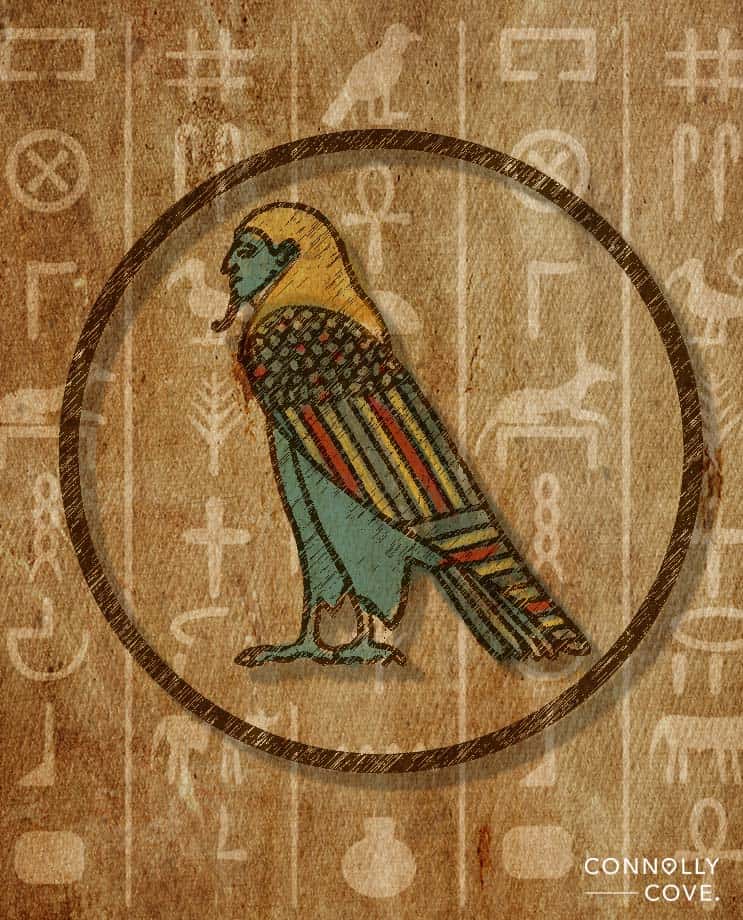
In ancient Egyptian religion and mythology, the Ba is an essential concept and symbol, as it stands for a person’s unique spirit or soul.
Ancient Egyptians believed that every individual had a physical body (khat) as well as an inner spirit or soul (Ba). They considered the Ba a part of an immortal person who could continue living after death. To add to their immortality, this unique soul was believed to be able to roam freely between the world of the gods and the physical world of the living.
If such a soul was able to fly freely between the two worlds, it probably would have wings, right? In funerary art, ancient Egyptians often depicted the Ba as a human-headed bird with wings spread to hover over the deceased person’s sarcophagus or mummy.
The Ka: the Individual’s Spiritual Double
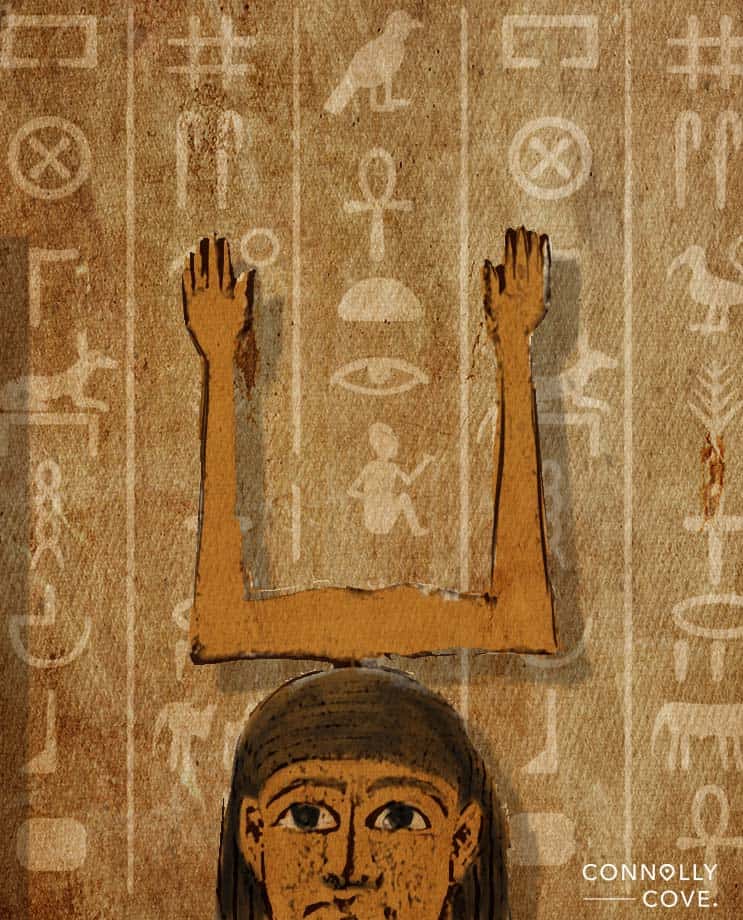
The idea of the Ka demonstrates the Egyptians’ belief that people have both physical and spiritual sides. It reflects the significance they placed on maintaining a person’s identity beyond death.
The Ka was thought to be a unique spiritual being, a double, that lived inside an individual throughout their entire lives. It was also believed to be what made each person unique and served as their vital energy and source of individuality. The Ka played a part even after the person died and their body decayed, so it needed to be fed. This is why ancient Egyptians used to make food offerings when visiting the tombs of the deceased.
The ultimate purpose of the Ka was to reunite in the afterlife with the bodies of the dead and other components of the soul, such as the Ba and Akh. Thus, one could live after this union in the realm of the gods.
The Ma’at Feather: Truth and Justice
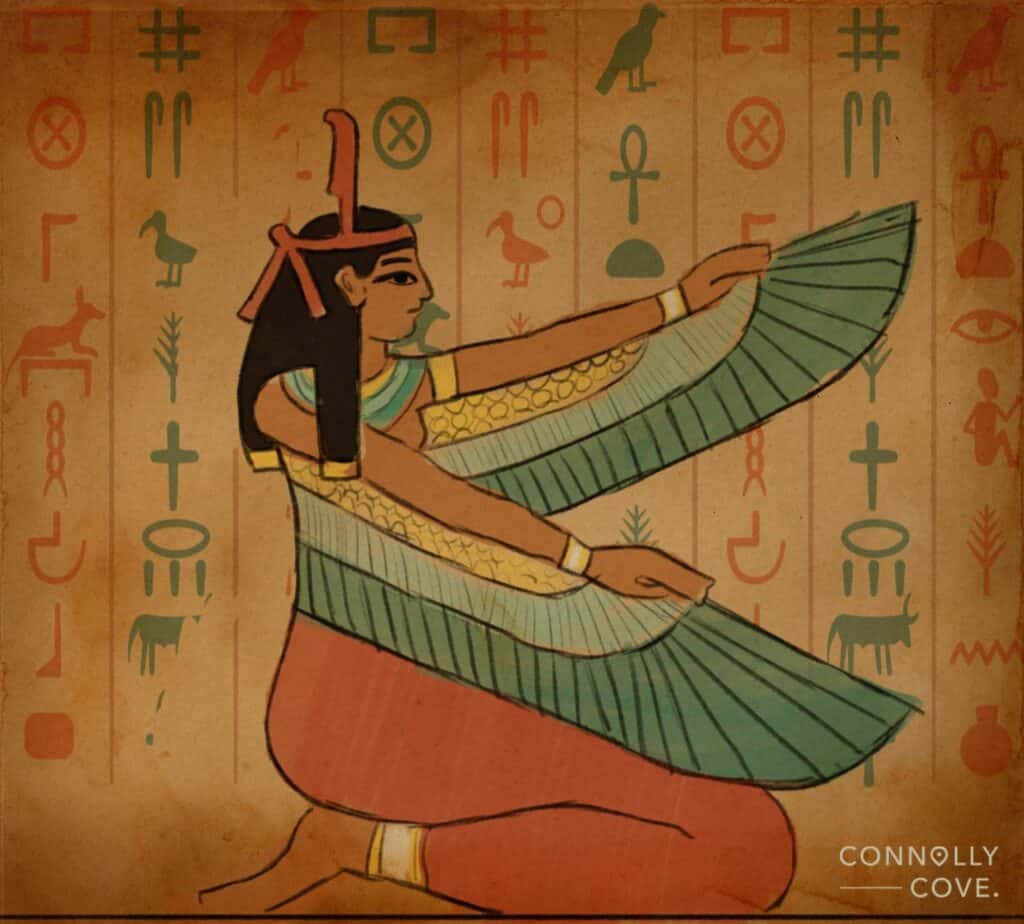
In Egyptian mythology, the Feather of Ma’at represents justice, balance, truth, and the cosmos as a whole. Egyptians believed that during the judgement process in the afterlife, a person’s heart was weighed against the Feather of Ma’at in the Hall of Ma’at. The god Osiris presided over this judgement and chose the spirit’s destiny depending on the weight of their hearts. If the heart came out to be lighter than the Feather of Ma’at, it indicated that the individual had lived a moral and balanced life, abiding by Ma’at’s rules, and thus worthy of entering paradise.
The Winged Sun: the Earthly and Spiritual Realms
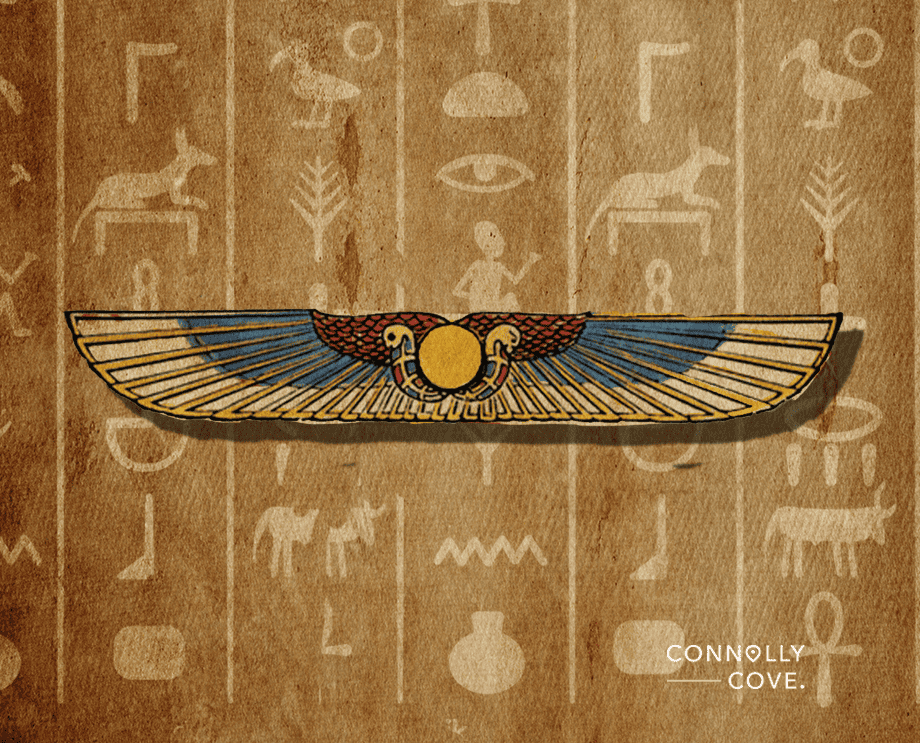
A sun disc, wings, and often other symbols are combined in the ancient Egyptian sign known as the Winged Sun Disc. It stands for divine power, safeguarding, and the link between the physical and spiritual worlds.
The sun disc, which represents the sun god Ra or Horus, is the main component of the Winged Sun Disc. In ancient Egyptian mythology, the sun was a strong and beloved deity that was connected to life, light, and rebirth. At the same time, the wings attached to the sun disc stand for speed, flight, and the ability to transcend physical limits.
The Sistrum: the Power of Music and Joy
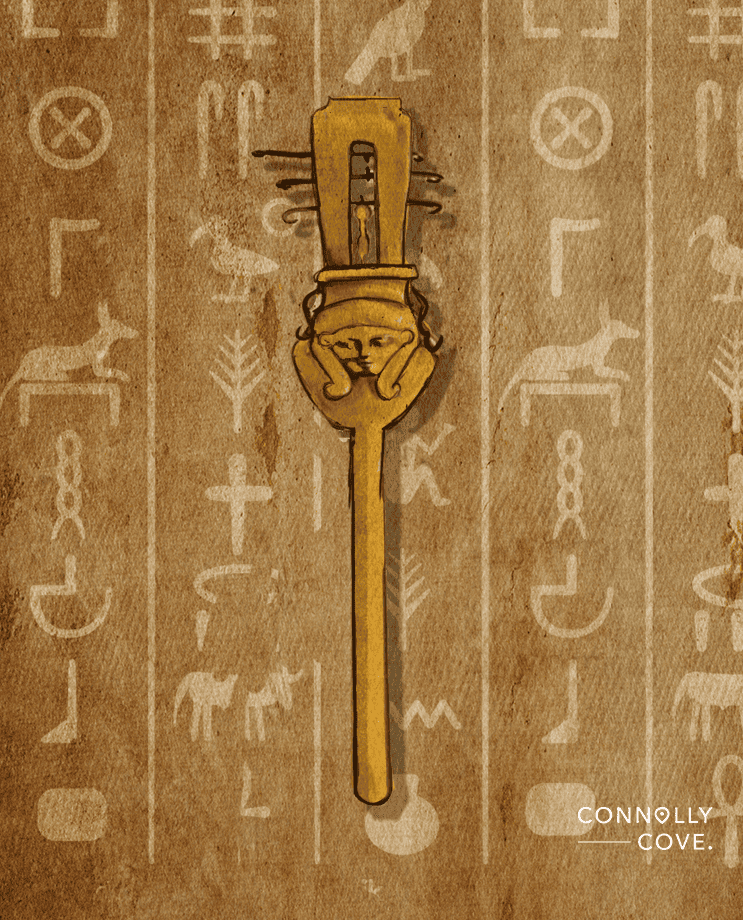
In ancient Egyptian culture, the Sistrum was mainly a musical instrument linked to the goddess Hathor. However, the Sistrum’s symbolic value goes beyond its musical role as it was viewed as a representation of happiness, fertility, the presence of the divine, and protection.
The Sistrum is a representation of the power of music and rhythm to evoke the divine and provide happiness to both humans and the gods. In ancient Egyptian art, it often appears in the hands of goddesses, priestesses, or dancers, emphasising its relationship to religious ceremonies, celebrations, and expressions of joy.
The Sesen: Creativity, Purity, and Divine Birth
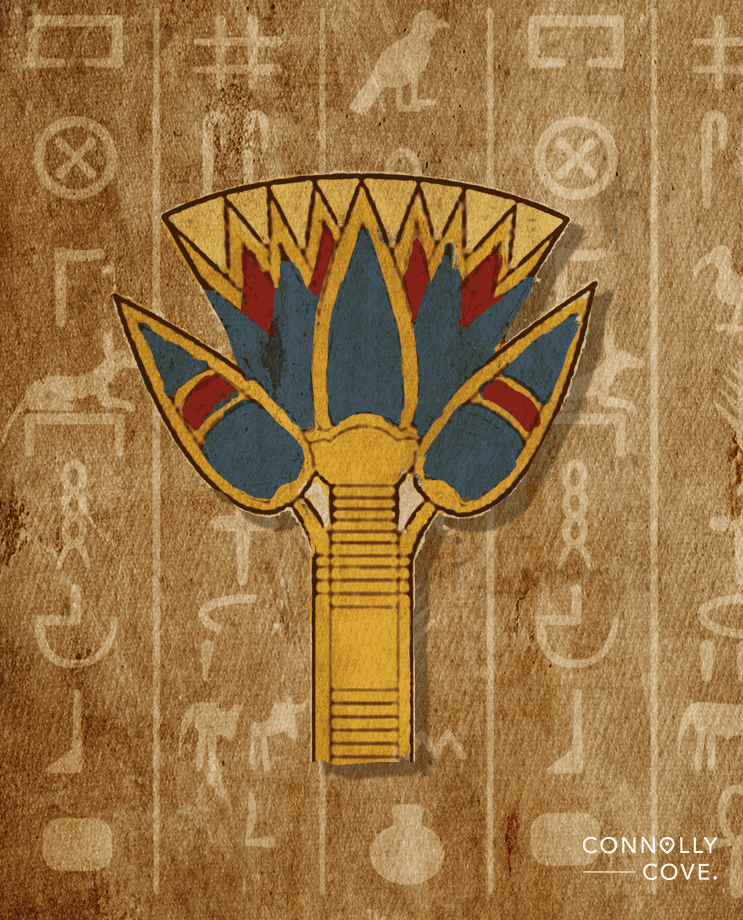
In ancient Egyptian culture, the Sesen symbol, commonly known as the lotus flower, is a significant and highly symbolic motif. It stands for rebirth, creativity, innocence, and divine birth.
The typical representation of the Sesen symbol is a blooming lotus flower. Due to its posture and look, the lotus has deep cultural and religious significance in Egypt. The flower grows from the muddy waters, opening its petals to reveal its flawless beauty. It represents the triumph of virtue over impurity.
Furthermore, the lotus flower was connected to the sun god, specifically the rising sun. Like the lotus that sprouted from the river at dawn, it was thought that the sun had rebirth every day. Thus, the Sesen symbol also represented the sun’s endless cycle and everyday rebirth.
The Tree of Life: Wisdom and Eternal Life
The goddess Isis is strongly linked to the Tree of Life in Egyptian mythology. It was believed that the Tree of Life provided nutrition and rebirth to the never-ending life, as the deceased may eat its fruit or find shelter beneath its branches. It was also related to wisdom and acquiring new knowledge.
On top of that, the Tree of Life stood for the balance and harmony of the universe. It stood for the cycles of growth, destruction, and regeneration, as well as the interconnection of all living things. It also symbolised the relationship between the heavens and the earth.
The Was Sceptre: Power and God’s Authority
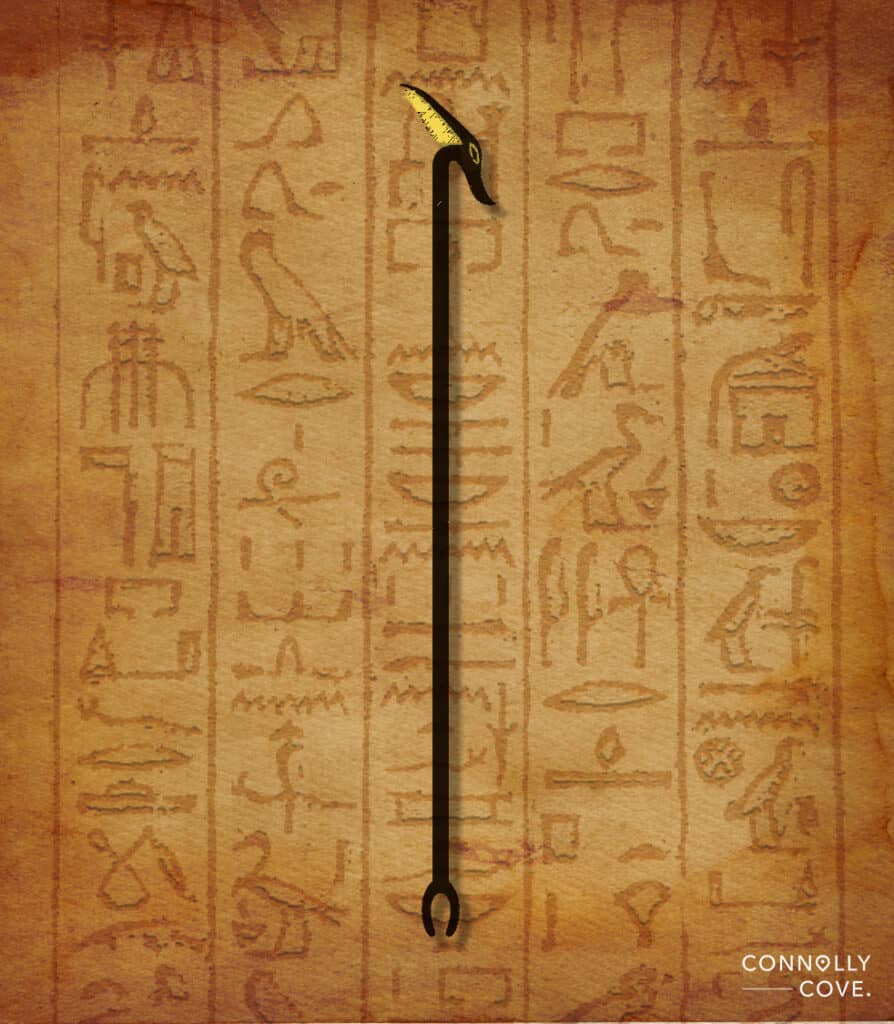
An important symbol in ancient Egyptian culture and religion is the Was Sceptre, also known as the Was Staff or Waset Sceptre. It is a ceremonial rod that stands for dominion, power, strength, and the might of the gods and their authority to rule. It’s depicted as a long stick with a handle on one end and an animal-shaped top on the other.
The Egyptian gods and goddesses were closely related to the Was Sceptre. It symbolised their authority over the universe and their ability to safeguard it. Pharaohs and other high-ranking officials usually held the sceptre as a sign of their power and divine connection. But the mighty sceptre had a significance beyond authority in politics and religion. It also stood for important values such as harmony and security.
The Shen Ring: Eternity and Protection
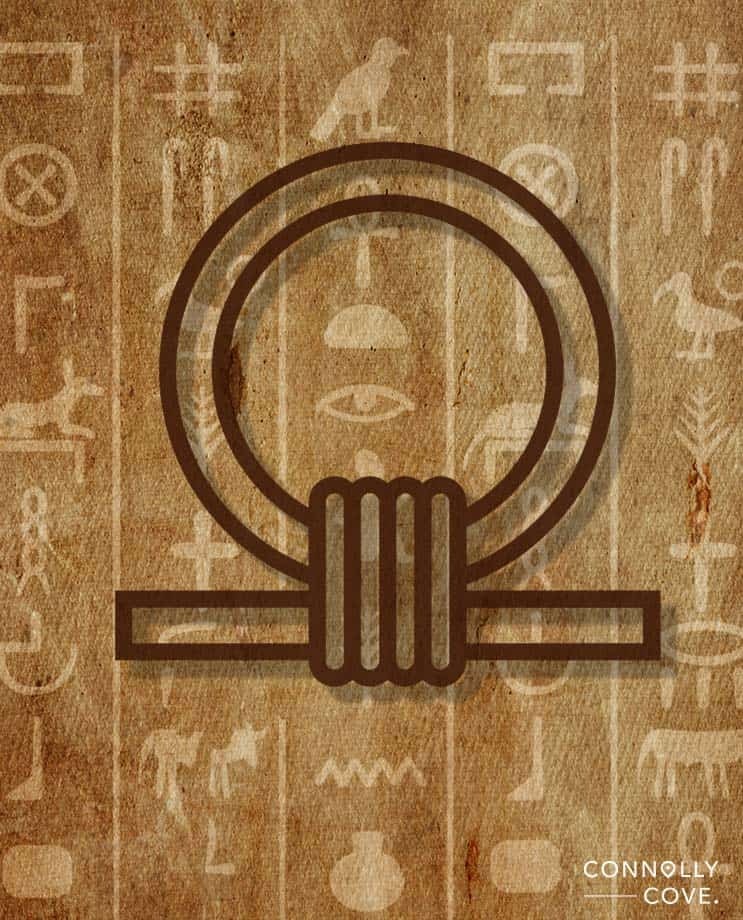
One significant hieroglyphic symbol in ancient Egyptian civilisation is the Shen symbol, closely related to the Cartouche. It stands for protection, eternity, and infinity.
The Shen symbol is an oval form with a bottom horizontal line and occasionally a top vertical line. In hieroglyphic writings, the oval shape encloses the name of a pharaoh or a god. The ancient Egyptian word “shen” itself means “encircle” and stands for the endless cycle of life, the infinite nature of time, and the never-ending rule of the gods or pharaohs.
The Uraeus: the Divine Power of a Cobra
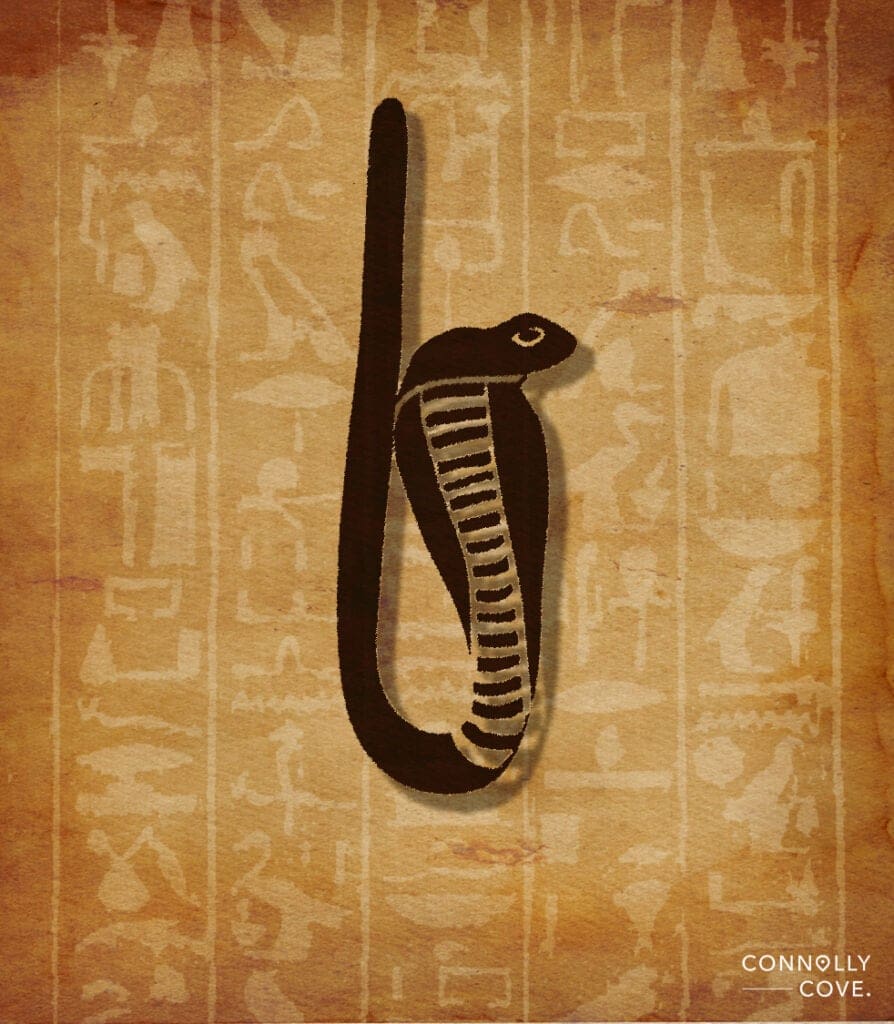
The Uraeus is a symbol of the divine and protective power of a cobra that dates back to ancient Egypt. It appears like a rearing cobra, usually with its hood expanded and poised to strike. The Uraeus was connected to royalty, especially the pharaohs, and served as a representation of their might and divine protection.
The Uraeus also had a reputation for being a guardian in addition to its royal relations. By standing as a protector for the wearer, it was thought to ward against evil and harmful energies. The Uraeus was viewed as a representation of divine intervention and the capacity to triumph against enemies.
The Menat: Fertility and Rejuvenation
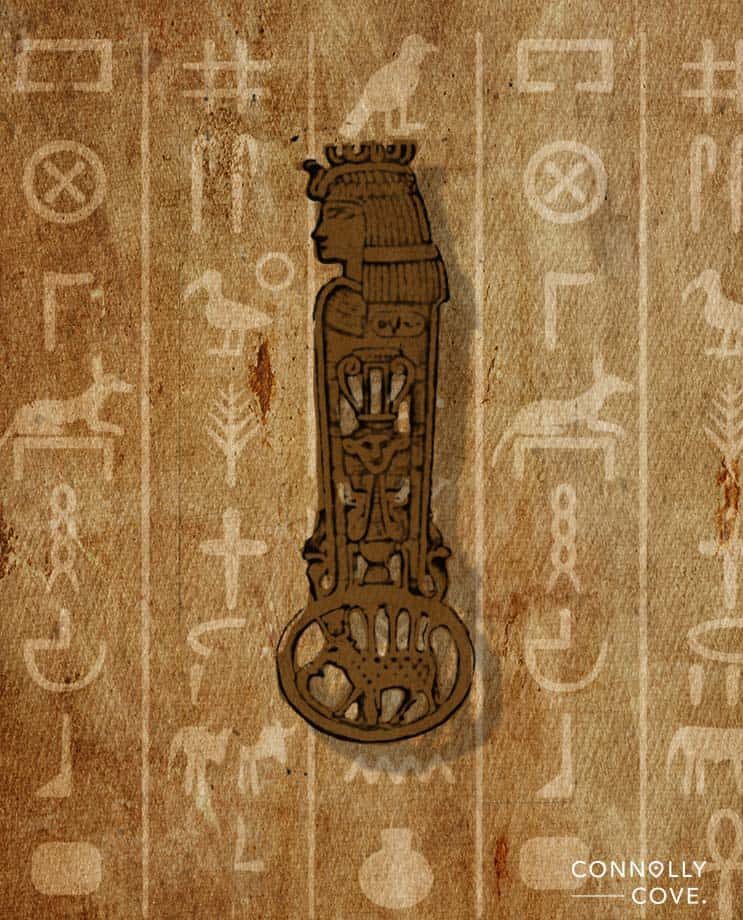
In various regions of ancient Egypt and at different times, the Menat, one of the most famous ancient Egyptian symbols, varied in its exact significance and symbolism. Most of the time, it is considered a representation of Hathor’s divine presence and protection. It serves as a reminder of the goddess Hathor’s benign traits and symbolises the link between the human and heavenly worlds.
The Menat necklace played a significant role in religious ceremonies and festivals honouring the goddess of happiness, love, music, and fertility, Hathor. It was regarded as a powerful charm of protection and was thought to bring benefits, happiness, and fortune, and it was connected to rebirth and regeneration.
We have explained the meanings of some of the most important ancient Egyptian symbols left by the ancient Egyptians in the elaborate hieroglyphic writings and fascinating artistic motifs. These ancient symbols give an insight into the beliefs and values of this extraordinary civilisation and help us discover its hidden secrets and deep meanings.







As a Newbie, I am always exploring online for articles that can aid me. Thank you